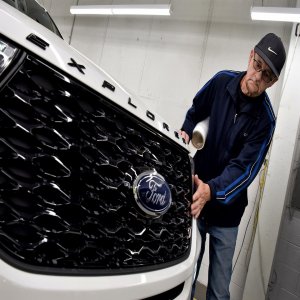Growing Focus on Transport Running on Natural Gas

STORY INLINE POST
Q: What milestones has Scania reached toward making Mexico’s transportation sector safer and less-polluting?
A: Our priority is active safety. Over the past two years, we have implemented new safety standards in the buses we introduce to the Mexican market based on various technologies. One is an emergency brake system that uses a camera sensor to detect when an impact is imminent. The system sends out audible signals and vibrates the driver’s seat. If the driver does not react, the bus brakes automatically. Another system, called a lane departure warning system (LDW), warns the driver when the vehicle changes lanes. We also use adaptive cruise control (ACC) systems, which can automatically accelerate or slow down the bus or truck depending on the distance between the unit and the vehicle driving in front of it, and traction-detecting electronic stability programs (ESP) that independently applies the brakes to individual wheels to counter oversteer or understeer.
Q: Now that NOM-012 is in place, how have Mexican transportation companies reacted to Scania’s cab-over trucks, including the New Generation models?
A: We are an important player in the global cab-over market but in Mexico we are still relatively new. Our latest family of trucks has been in the country for almost two years, while our competitors, mostly American truck companies, have been in Mexico for decades. However, I expect European trucks to gain market share very quickly. Between 2003 and 2006, I was Scania’s Sales Manager for Chile, Argentina and Uruguay. In Chile, 20 years ago, 80 percent of the trucks were American. Today, most of them are European. Something similar happened in South Africa and Australia.
European trucks in Mexico represent only 4 percent of the market. In five years, this will increase to 20-30 percent. Scania wants to be the leader as this happens. European trucks are a better option for the country because of their higher fuel efficiency, which is particularly important given fuel prices in Mexico. Moreover, European trucks are safer. American trucks generally use too much space, which causes poor visibility and makes them hard to maneuver.
European standards establish a maximum bumper-to-bumper length for trucks, while American norms focus only on the truck’s trailer. Mexican norms are a mix of both regulations. In terms of volume, European norms are advantageous for cab-over models because less space is taken by the cabin and the engine, allowing trucks to have longer trailers and carry more cargo. Scania appealed to the government to allow bigger trailers, but this has not been approved yet.
Generally speaking, the American rules system is disappearing. Thirty years ago, it was the predominant standard but now only three countries use it. Mexican clients are becoming familiar with European standards and area realizing that cab-over trucks offer increased visibility, maneuverability and a safer cabin environment. Swedish norms, which apply to Scania trucks, are even stricter. For example, in the area of crash testing, Sweden demands that vehicles be able to resist impacts of greater force.
Q: How has the Mexican market reacted to natural gas vehicles?
A: Scania’s first natural gas vehicle was introduced over 80 years ago. What is new is that these units are now becoming more commonplace in Mexico. In Colombia, Scania was recently awarded a contract to provide 800 natural gas buses to the city of Bogota. The technology is considerably cleaner and more economical. We also have electric and hybrid options but considering that the technology for electric vehicles is still relatively expensive, gas is the best option.
We have already completed several successful projects for natural gas-fueled public transport, intercity buses and trucks. Celaya is the first municipality in Mexico with an intercity bus system running totally on natural gas. In Puebla, we will deliver 37 gas buses for the first green BRT system in México. That being said, 99 percent of the units we sell in Mexico are still diesel. Part of the reason is because natural gas fueling infrastructure has not developed properly yet. However, clients are gradually showing interest in gas-powered vehicles. We also have a CNG offering for the cargo segment. We are the first brand that introduced this technology with Euro VI requirements.
Scania is a Swedish company that manufactures heavy trucks and buses. It also builds diesel motors for industrial and marine applications. The company is active in more than 100 countries with a global workforce of 52,000 employees








 By Jan Hogewoning | Journalist and Industry Analyst -
Fri, 08/07/2020 - 05:00
By Jan Hogewoning | Journalist and Industry Analyst -
Fri, 08/07/2020 - 05:00









